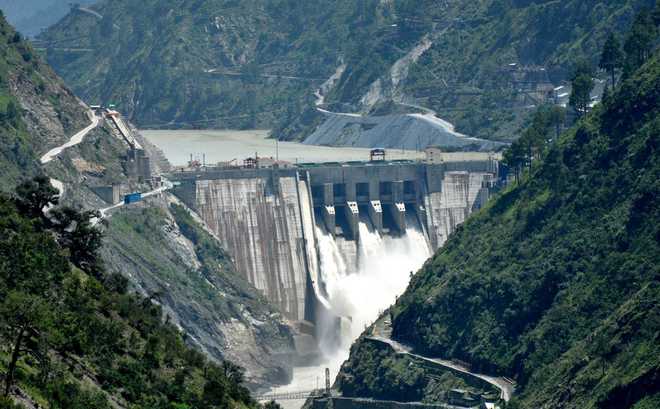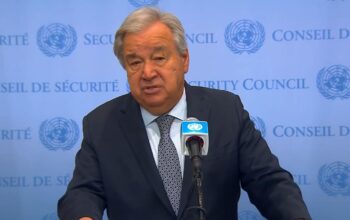Mentoring Desk
ISLAMABAD: India has launched an arbitrary effort to increase the reservoir capacity of two major hydroelectric projects in occupied Kashmir, a provocative step that has intensified its standoff with Pakistan following the suspension of a decades-old water-sharing agreement.
The operation, which began last week, comes on the heels of a deadly attack in the region and marks a significant escalation in the long-standing dispute over the Indus River system.
The move involves a “reservoir flushing” process at the Salal and Baglihar hydroelectric projects, aimed at clearing sediment buildup that has hampered power generation for years.
Sources familiar with the operation, speaking anonymously to Reuters, confirmed that the work started on Thursday and ran for three days from May 1. It’s the first time such maintenance has been conducted since the dams were built in 1987 and 2008-2009, respectively—a shift made possible by India’s recent suspension of the Indus Waters Treaty.
Tensions between the nuclear-armed neighbours spiked after an April 22 attack in Pahalgam, occupied Kashmir, killed 26 people, mostly tourists, in one of the deadliest assaults in the region since 2000. India has hinted at cross-border involvement without offering proof, while Pakistan has dismissed the claims and demanded an impartial investigation. The incident has fueled a broader confrontation, with water now emerging as a critical flashpoint.
A Treaty Under Strain
The Indus Waters Treaty, brokered by the World Bank in 1960, has long governed how India and Pakistan share the vast Indus River system. India controls the eastern rivers—Sutlej, Beas, and Ravi—while Pakistan relies on the western rivers, including the Indus, Jhelum, and Chenab, which flow through India first. The treaty allows India to tap these western rivers for hydropower, but only under strict conditions that limit storage and ensure downstream flows to Pakistan remain intact.
For decades, this framework held firm despite wars and skirmishes. But India’s decision to suspend the treaty has unshackled its ambitions, allowing it to pursue projects like the reservoir flushing without prior consultation with Pakistan. Reuters reported that India did not notify its neighbor about the operation—a breach of past practice under the treaty, which had blocked such unilateral actions.
The flushing, carried out by India’s state-run NHPC and local authorities in Kashmir, targets sediment that has choked the dams’ efficiency. “This is the first time such an exercise has taken place and will help in more efficient power generation and prevent damage to turbines,” one source told Reuters. Another added, “We were also asked to open the adjustable gates for cleaning, which we did from May 1,” signaling an intent to maximize the dams’ operational freedom.
Residents along the Chenab River in Asad Kashmir noticed the effects firsthand, reporting increased water releases from both dams between Thursday and Saturday. Separately, the Press Trust of India posted a video on X showing restricted flows through the Baglihar dam, underscoring the operation’s scale.
Flushing a reservoir involves nearly draining it to flush out sediment—a process that can slash a dam’s output if left unchecked. The 690-megawatt Salal project, for instance, has been running well below capacity due to silt buildup, a problem compounded by Pakistan’s objections to flushing under the treaty. The 900-megawatt Baglihar project has faced similar setbacks. “Flushing is not a common thing because it leads to a lot of water wastage,” one source told Reuters. “Downstream countries are expected to be informed in case it leads to any inundation.”
While this week’s operation may not immediately disrupt Pakistan’s water supply, which depends heavily on these rivers for irrigation and hydropower, the precedent is worrisome. More than half a dozen similar projects dot the region, and coordinated flushing could eventually strain Pakistan’s resources.
India’s water minister has vowed to “ensure no drop of the Indus river’s water reaches Pakistan,” a pledge that experts say is more rhetorical than feasible in the short term. The treaty’s design and the rivers’ natural flow make an immediate cutoff impractical. But the suspension has given India unprecedented latitude. “The suspension means India can now pursue our projects at free will,” said Kushvinder Vohra, who recently retired as head of India’s Central Water Commission after years of working on Indus disputes with Pakistan.
The treaty’s unraveling reflects years of friction. India has pushed to renegotiate its terms, arguing that population growth and climate change demand more flexibility. Disputes over projects like the Kishenganga and Ratle dams have landed in the Permanent Court of Arbitration in The Hague, where the two sides have sparred over storage capacities. Building Salal and Baglihar required exhaustive negotiations with Pakistan, which feared losing its water share.
India’s latest move signals a willingness to test those boundaries further. The NHPC and local Kashmir authorities did not respond to Reuters’ requests for comment, leaving the operation shrouded in official silence. But its implications are clear: With the treaty sidelined, India is flexing its upstream advantage, potentially deepening a rift that has simmered for generations.
India curtails Chenab flow
Meanwhile, India has sharply curtailed water releases from the Chenab River into Pakistan, Dawn newspaper reported.
The abrupt reduction — which Pakistani officials called a violation of international law — saw water flows at the Marala headworks in the central Punjab province plunge from 35,000 cubic feet per second (cusecs) on Sunday to 3,100 cusecs by Monday morning. By afternoon, outflows had stalled entirely, according to Pakistan’s Water and Power Development Authority (WAPDA), leaving downstream communities bracing for agricultural and economic fallout during a pivotal crop season.
A senior Punjab irrigation official accused India of exploiting its upstream position to “strangle” water access by filling reservoirs at three major hydropower dams: the Pakal Dul, Baglihar, and Salal projects. Together, the facilities can store over 1.3 million acre-feet of water. “This is a grave violation of the Indus Waters Treaty,” the official said, warning that Pakistan could face severe shortages for days and potential flooding if India suddenly releases pent-up flows.
The sudden drop in water supply threatens to worsen an already dire shortfall for Kharif crops, including rice and cotton, which depend on monsoon-season irrigation. At an emergency meeting on Monday, the Indus River System Authority (IRSA) warned that early Kharif plantings face a 21% water deficit, with late-season shortages projected at 7%.
Officials cautioned that these estimates could deteriorate further if India continues restricting flows.
Internal government documents detail India’s Chenab basin infrastructure, including the 1,000-megawatt Pakal Dul Dam and the 900-megawatt Baglihar Dam, which together hold nearly 410,000 acre-feet. The Salal Dam, with 228,000 acre-feet of storage, sits closest to the Pakistani border.
“If India keeps diverting water, we could face shortages for four to five more days,” the Punjab official warned, adding that sudden releases could also trigger flooding in communities downstream. (Content courtesy Reuters)
Copyright © 2021 Independent Pakistan | All rights reserved




